Table of Contents
Introduction Mango Smoothie Recipe
As the sun climbs higher and the days grow longer, there’s nothing quite like a delicious Mango Smoothie Recipe to refresh and revitalize your spirit. This tropical delight, known for its creamy texture and sweet, vibrant flavors, is more than just a treat for your taste buds. Mangoes, the “king” of fruits, are packed with nutrients and health benefits that make every sip of this smoothie a step towards better health. From providing a strong immunity boost to promoting radiant skin, mangoes bring a wealth of goodness to your glass.
Whether you’re looking for a quick breakfast option, a mid-day refreshment, or a healthy snack, our mango smoothie recipe is the perfect solution. Easy to make and irresistibly delicious, it’s your ticket to a tropical paradise, no matter where you are. Join us as we dive into the world of mango smoothies, exploring not just how to make them, but why they’re so good for you.
The Magic of Mango Smoothie Recipe
Mango, often hailed as the “king of fruits,” is not just a delight to the palate but also a powerhouse of nutrition. With its origins rooted in India and Southeast Asia, mango has been cherished for over 4,000 years. Available in hundreds of varieties, each mango brings its own unique taste, shape, size, and color to the table. But beyond its delicious taste, the mango is renowned for its impressive nutritional profile and myriad health benefits.

Nutritional Powerhouse: Mango Smoothie Recipe
A single cup of fresh mango provides a substantial nutritional punch. It contains:
Calories: 99 Protein: 1.4 grams Carbohydrates: 24.7 grams Fiber: 2.6 grams Sugar: 22.5 grams Vitamin C: 67% of the Daily Value (DV) In addition to being a low-calorie fruit, mango is a rich source of vital nutrients including vitamin C, which plays a crucial role in immune system support, iron absorption, and cell growth and repair. Mangoes also offer a good dose of copper and folate, essential nutrients for healthy fetal growth and development.
Immune System Support
Mangoes are not just about taste; they are a formidable ally for your immune system. A single cup of mango provides 10% of your daily vitamin A needs. Vitamin A is essential for a healthy immune system, and its deficiency is linked to a greater risk of infection. Alongside, mangoes are packed with vitamin C, which aids in the production of disease-fighting white blood cells, enhances their effectiveness, and improves your skin’s defenses.
Heart Health and Digestive Wellness
Mangoes are heart-friendly, thanks to their content of magnesium and potassium which help maintain healthy blood flow and blood pressure levels. Furthermore, mangoes contain digestive enzymes called amylases, which break down complex carbs into sugars, aiding digestion. The water and dietary fiber in mangoes also help in alleviating constipation and diarrhea.

Eye Health
Rich in antioxidants like lutein and zeaxanthin, mangoes support eye health. These antioxidants, concentrated in the retina, act as a natural sunblock, absorbing excess light and protecting the eyes from harmful blue light.
Anticancer Properties
Mangoes are high in polyphenols, which may have anticancer properties. These compounds help protect against oxidative stress linked to many types of cancer. Mangiferin, a major polyphenol in mango, has shown potential in reducing inflammation and protecting cells against oxidative stress and cancer cell growth.
How to Enjoy Mangoes
Mango is versatile and easy to incorporate into your diet. It can be added to smoothies, diced into salsas, tossed into salads, or served alongside other tropical fruits. Remember, while mango is sweeter and contains more sugar than many other fruits, moderation is key.
How to Make a Mango Smoothie Recipe
Ingredients and Directions
Mango Smoothie Recipe
Course: Beverage, Breakfast, SnackCuisine: International2
servings10
minutes10
minutesTo make this delicious smoothie, you’ll need:
Ingredients
2 cups fresh mango, peeled and diced
1 cup plain yogurt
1/2 cup milk (dairy, almond, or coconut)
1 cup ice cubes
Directions
- Add all ingredients to the blender the ingredients on high speed for 30-60 seconds, or until the mixture is smooth and creamy.
Nutrition Facts
2 servings per container
Calories99
- Amount Per Serving% Daily Value *
- Total Fat
0.6g
1%
- Amount Per Serving% Daily Value *
- Total Carbohydrate
24.7g
9%
- Dietary Fiber 2.6g 11%
- Sugars 22.5g
- Protein 1.4g 3%
- Vitamin A 10%
- Vitamin C 60%
- Vitamin B6 12%
- Folate 18%
- Copper 20%
* The % Daily Value tells you how much a nutrient in a serving of food contributes to a daily diet. 2,000 calories a day is used for general nutrition advice.
Mangoes also contain smaller amounts of other vitamins and minerals, such as vitamin E, vitamin K, potassium, and magnesium, making them a nutritious addition to your diet.
Boost Your Smoothie’s Nutritional Profile
- Add Greens: Incorporate a handful of spinach or kale for an extra nutrient boost. These greens blend well without altering the smoothie’s tropical taste.
- Superfood Powders: Enhance your smoothie with a teaspoon of spirulina, chlorella, or matcha powder for a burst of antioxidants and a subtle flavor twist.
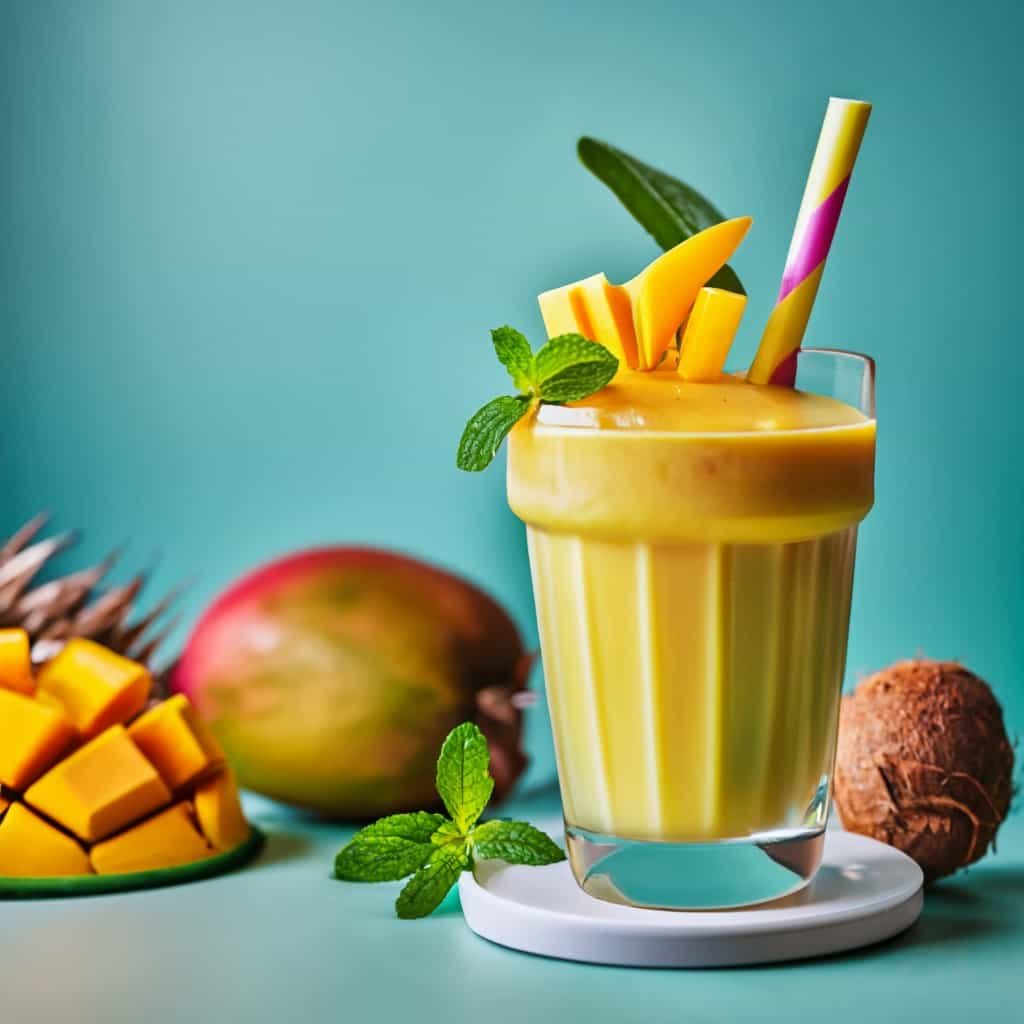
Protein-Packed Mango Smoothie Recipe
For a post-workout snack or a more satiating meal replacement, increase the protein content of your mango smoothie.
- Protein Powder: Mix in a scoop of your preferred protein powder. Vanilla or unflavored works best with the mango’s sweetness.
- Nut Butter: Add a tablespoon of almond butter, cashew butter, or peanut butter for a creamy texture and protein boost.
Tropical Twist
Embrace the tropical flair by adding other fruits or coconut.
- Pineapple or Papaya: Mix in ½ cup of pineapple or papaya chunks for a more complex tropical flavor.
- Coconut: Use coconut milk instead of your regular milk and add a tablespoon of shredded coconut or a teaspoon of coconut oil for a lush, island-inspired taste.
For the Kids
Make the smoothie more appealing to children with these fun additions.
- Fun Toppings: Top the smoothie with a sprinkle of granola, sliced bananas, or a drizzle of honey.
- Smoothie Popsicles: Pour the smoothie mixture into popsicle molds and freeze for a healthy, kid-friendly treat.
Serving Suggestions
- Smoothie Bowls: Pour the smoothie into a bowl and top with sliced fruit, nuts, seeds, or granola for a filling breakfast or snack.
- Layered Smoothie: Create a visually appealing layered smoothie by blending some mango smoothie with additional berries or beetroot powder separately, then layering them in a glass.
Storage Tips
- Refrigerate Leftovers: If you have leftover smoothie, it can be stored in the refrigerator for up to 24 hours. Give it a good stir or shake before drinking.
- Freeze for Later: Pour any extra smoothie into an ice cube tray and freeze. Pop out the smoothie cubes into a blender when you’re ready for a quick and cold smoothie.
Choosing the Perfect Mango
When making a mango smoothie, selecting the right mango is crucial for achieving the best flavor and texture. Here are some tips for choosing the perfect mango:
- Ripeness: Look for mangoes that are slightly soft to the touch when gently pressed. Avoid mangoes that are too hard or too mushy.
- Color: Ripe mangoes typically have a deep yellow or orange color with some red or green hues, depending on the variety.
- Smell: A ripe mango should have a sweet, fragrant aroma near the stem end.
- Appearance: Check for any blemishes, bruises, or dark spots on the skin, which may indicate overripeness or damage.
Remember, mangoes continue to ripen after being picked, so if you have a slightly firm mango, you can let it sit at room temperature for a few days to soften and sweeten.
Mango Smoothie Bowl
If you’re looking for a more substantial meal or a creative way to enjoy your mango smoothie, try making a smoothie bowl! Here’s how:
- Prepare the mango smoothie according to the recipe, but use less liquid to create a thicker consistency.
- Pour the thick smoothie into a bowl.
- Top the smoothie with your favorite toppings, such as sliced mango, berries, granola, chia seeds, or shredded coconut.
- Use a spoon to enjoy your mango smoothie bowl, scooping up the toppings and the creamy smoothie base in each bite.
Smoothie bowls are a fun and visually appealing way to enjoy your mango smoothie while adding some variety and extra nutrition to your meal.
Meal Prep and Storage
Mango smoothies are best enjoyed fresh, but with a little preparation, you can make your mornings easier and still enjoy this delicious treat:
- Prep ingredients: Peel and dice your mangoes in advance and store them in an airtight container in the fridge for up to 3 days or in the freezer for up to 6 months.
- Portion and freeze: Measure out the ingredients for individual smoothies and store them in freezer-safe bags or containers. When you’re ready to make your smoothie, simply add the contents of the bag to your blender with your chosen liquid and blend.
- Refrigerate leftovers: If you have any leftover mango smoothie, pour it into an airtight container and store it in the fridge for up to 24 hours. Give it a good stir or a quick blend before enjoying it again.
By prepping your ingredients and portioning them out in advance, you can save time and ensure that you always have a healthy and refreshing mango smoothie on hand.
FAQ: Mango Smoothie Recipe
- Can I use frozen mango instead of fresh?
Yes, you can use frozen mango chunks in place of fresh mango. This is especially convenient when mangoes are not in season or if you want to enjoy a cold smoothie without adding ice cubes. - Can I make mango smoothies ahead of time?
While it’s best to enjoy mango smoothies fresh, you can make them ahead of time and store them in the fridge for up to 24 hours. Just give the smoothie a good stir or a quick blend before drinking. - Can I add other fruits to my Mango Smoothie Recipe?
Absolutely! Mango pairs well with many other fruits, such as banana, pineapple, berries, or kiwi. Feel free to experiment and create your own unique flavor combinations. - Is it necessary to use yogurt in a Mango Smoothie Recipe?
Yogurt helps create a creamy texture and adds protein and probiotics to your smoothie. However, if you prefer a lighter smoothie or have a dairy allergy, you can omit the yogurt and adjust the liquid as needed. - Can I use a different sweetener instead of honey?
Yes, you can use other natural sweeteners like maple syrup, agave nectar, or dates to sweeten your Mango Smoothie Recipe. You can also omit the sweetener entirely if your mangoes are very ripe and sweet.
Conclusion:
Our Mango Smoothie Recipe is more than just a refreshing drink; it’s a celebration of flavor and well-being. Packed with vitamins, protein, and the natural goodness of fruit, it’s the perfect companion for anyone on the path to a healthier lifestyle. So, blend up this tropical treat and let your senses revel in the pure, sun-kissed essence of mango. Cheers to your health and happiness!

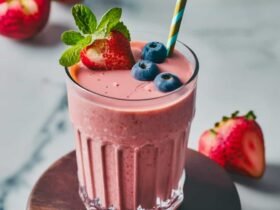
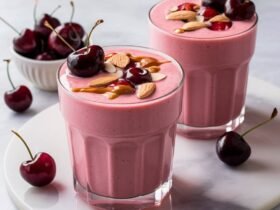
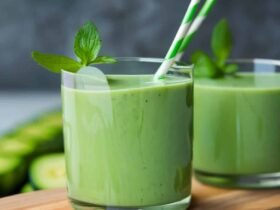

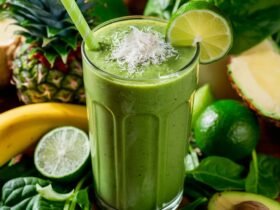

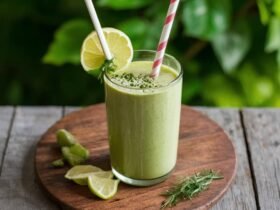

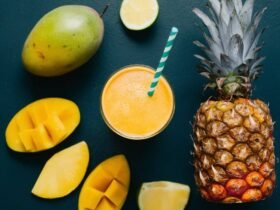


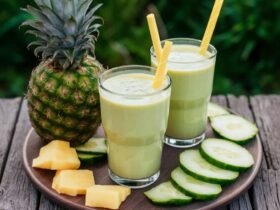
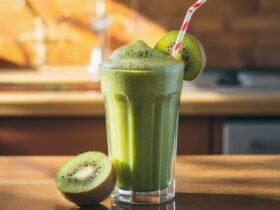
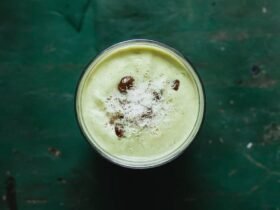
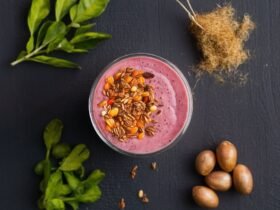
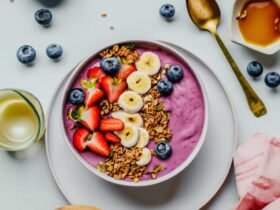
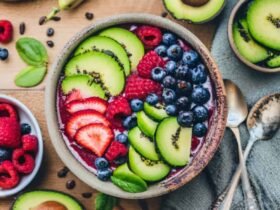

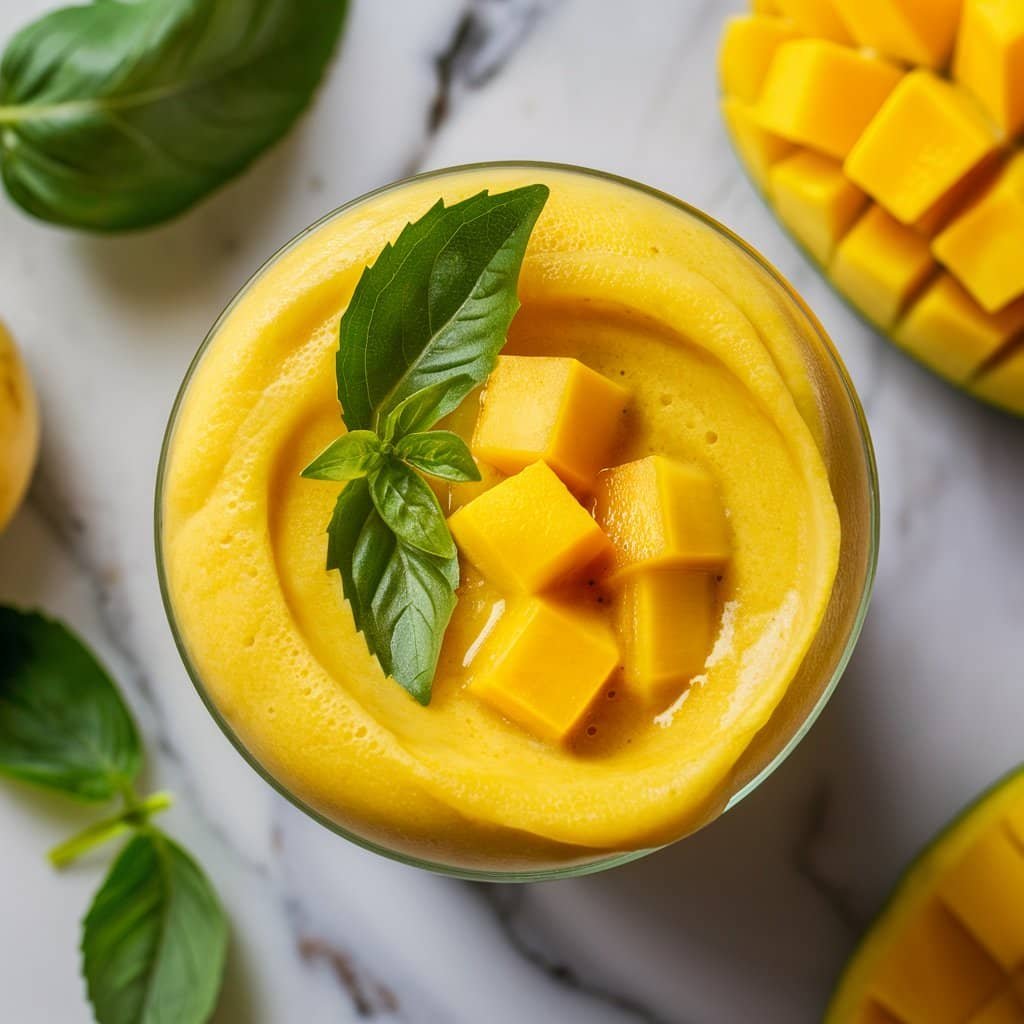


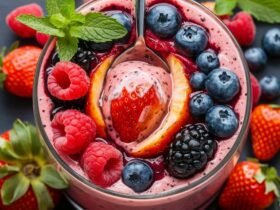
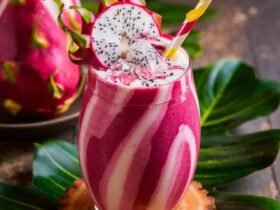
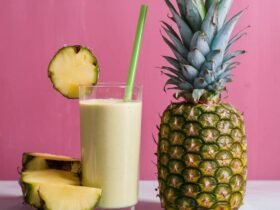
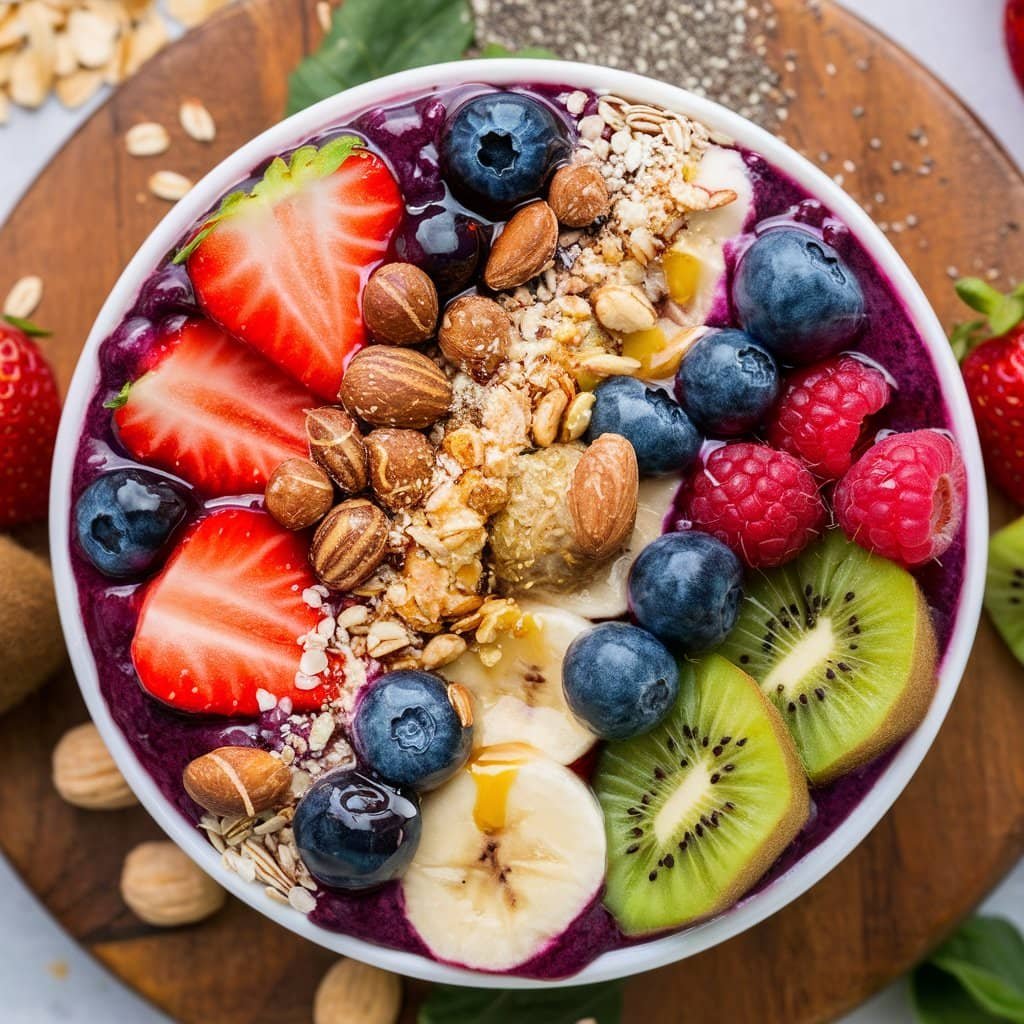
Leave a Reply